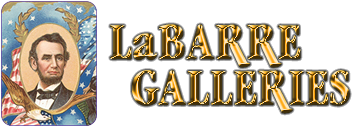Navy Relief Society Membership Certificate Signed by Admiral George Dewey - 1904 dated Autograph
Inv# AG1382 AutographCertificate for membership to the Navy Relief Society signed by Admiral George Dewey.
George Dewey (1837-1917) George Dewey was an admiral of the United States Navy. He is best known for his victory at the Battle of Manila Bay during the Spanish-American War. He was also the only person in the history of the United States to have attained the rank of Admiral of the Navy, the most senior rank in the United States Navy.
Dewey was born in Montpelier, Vermont, directly opposite the Vermont State House to Julius Yemans Dewey and his first wife, Mary Perrin. Young Dewey went to school in the nearby town of Johnson. When he was fifteen years old he went to the Norwich Military School. The school, better known as Norwich University, had been founded by Alden Partridge and aimed at giving cadets a well-rounded military education. Dewey attended for two years (1852–1854). He found a military role model when he read a biography of Hannibal. Dewey entered the Naval Academy in 1854.
As midshipman, Dewey first took a practice cruise in the ship Saratoga and here he earned recognition as a cadet officer. As a result, he was assigned to one of the best ships of the old navy — the steam frigate USS Wabash. The Wabash under Captain Samuel Barron was the new flagship of the Mediterranean Squadron. On July 22, 1858, the ship left Hampton Roads for Europe.
The Wabash reached her first port of call, Gibraltar, on August 17, 1858. The Wabash returned to the New York Navy Yard on 16 December 1859 and decommissioned there on 20 December 1859. Dewey served on two short-term cruises in 1860, gaining invaluable experience.
After the end of the civil war Lieutenant-Commander Dewey remained in active service, and was sent to the European station as executive officer of the Kearsarge — the famous old ship that had sunk the privateer Alabama.
After a year of this, he was assigned to duty in the navy yard at Portsmouth, New Hampshire, and there met the woman who became his wife.[His wife was Susan "Susie" Boardman Goodwin (1844–1872), daughter of New Hampshire's war governor, Ichabod Goodwin, a Democrat who fitted out troops for the war at his own expense. The Deweys were married on 24 October 1867 and had a single son, George Goodwin Dewey (December 23, 1872 - February 10, 1963).
Dewey's next tour of duty was in 1867 and 1868 as executive officer of the Colorado — the same vessel in which he had won his honors at Fort Fisher, and now the flagship of the European Squadron. The admiral in command of the ship and squadron was Goldsborough, and one of Dewey's companions was John Crittenden Watson — the same man, who, as rear-admiral, relieved Admiral Dewey of his duties at Manila, when he wished to return to the United States in the summer of 1899."
Some tranquil years followed the end of Dewey's cruise in the Colorado. For two years, from 1868 to 1870, he was an instructor at the Naval Academy. The next year he did special surveying work in the steamer Narragansett, and in 1872 was given command of that vessel, and spent nearly four years in her, engaged in the service of the Pacific Coast Survey."
This entitled him to a period of rest ashore; and he was ordered to Washington, and made lighthouse inspector in 1880, and subsequently secretary of the lighthouse board, a service in which he took great interest. Meanwhile he had been promoted to the grade of commander. This residence in Washington as a bureau officer of high rank gave him an extensive acquaintance, and he became one of the most popular men in the capital. He was a member of the Metropolitan Club, the leading social club of Washington.











Ebay ID: labarre_galleries